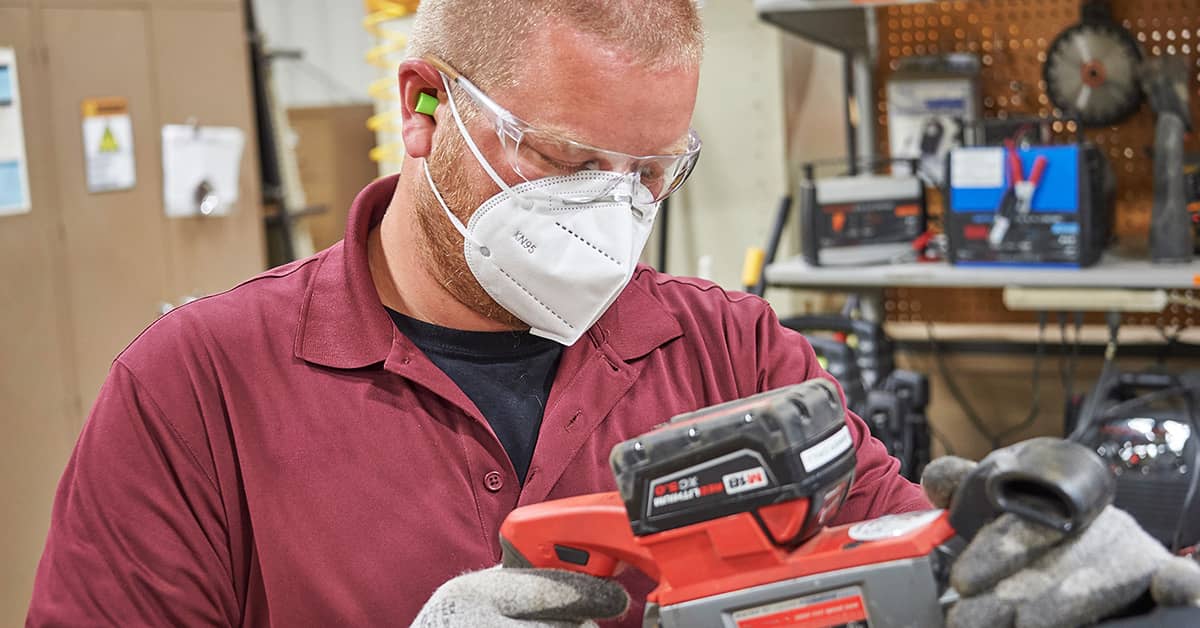Breathe easy with respiratory protection
Date Posted: 03/25/2024

Employees depend on respirators to keep them safe and healthy when working in a hazardous atmosphere. Respirators protect them from air contaminant hazards such as dusts, aerosol mists, metal fumes, evaporated vapors, gases, or oxygen-deficient atmospheres. Depending on the contaminant, overexposure can cause lung disease; problems with the liver, kidneys, heart, or nervous system; or cancer.
Respirators are a last line of defense that can only be used when elimination (physical removal of the hazard), substitution (replacement of the hazard), engineering controls (isolation of workers from the hazard), and administrative controls (changing the way people work) are either not fully effective or are infeasible.
There are basically two types of respirators:
- Air-purifying respirators (including N95s, gas masks, chemical cartridge respirators, and powered air-purifying respirators) clean the air as a person inhales.
- Atmosphere-supplying respirators supply the wearer with a separate source of clean air (self-contained breathing apparatus (SCBA)) or personal air purifying respirator through a hose or tank carried on the back.
The capabilities of a respirator depend a lot on the type and amount of the air contaminant and the work being done.
OSHA’s requirements
OSHA’s respiratory protection standard applies to General Industry employers who have employees exposed to hazards for which respiratory protection is required or used voluntarily (there are limited employer requirements for certain voluntary use). Under the standard, employers must:
- Identify and evaluate the respiratory hazard(s) in the workplace.
- Develop and implement a written respiratory protection program with required worksite-specific procedures and elements for required respirator use.
- Designate a program administrator to administer the respiratory protection program.
- Conduct evaluations of the workplace as necessary to ensure that the provisions of the current written program are being effectively implemented, and that it continues to be effective.
- Select and provide appropriate respirators.
- Train employees on respiratory protection.
- Provide a medical evaluation to determine the employee’s ability to use a respirator, including N95 (dust masks) if required to be used.
- Identify a physician or other licensed health care professional (PLHCP) to perform medical evaluations.
- Fit-test employees initially and at least annually thereafter with the same make, model, style, and size of respirator that will be used. This applies to all tight-fitting respirators, including N95 (dust masks) if required to be used.
- Clean and disinfect respirators per OSHA requirements.
- Store all respirators to protect them from damage, contamination, dust, sunlight, extreme temperatures, excessive moisture, and damaging chemicals.
- Use compressed air, compressed oxygen, liquid air, and liquid oxygen for respiration that meets OSHA specifications.
- Retain records of medical evaluations required by 1910.134 and make them available in accordance with 1910.1020.
- Establish a record of the qualitative and quantitative fit tests administered to an employee.
- Retain fit test records for respirator users until the next fit test is administered.
- Retain a written copy of the current respirator program.
- Provide any retained written materials, upon request, to affected employees and to OSHA or designee for examination and copying.
- Ensure any voluntary respirator use is done in a way that poses no hazards to the worker. Also provide a copy of Appendix D from the Respiratory Protection standard to all voluntary respirator users.
How Safety Management Suite Can Help
Respiratory hazards associated with industrial hygiene can be complicated and time consuming. Join our webinar Stay Compliant with Respiratory Protection on Thursday, March 28, as our regulatory experts cover common respiratory protection issues and topics affecting both general industry and construction workplaces. The last 15 minutes of the event will be saved to answer your questions.
E-mail Newsletter
Sign up to receive the weekly EHS Insider email newsletter for safety articles, news headlines, regulatory alerts, industry events, webcasts, and more.